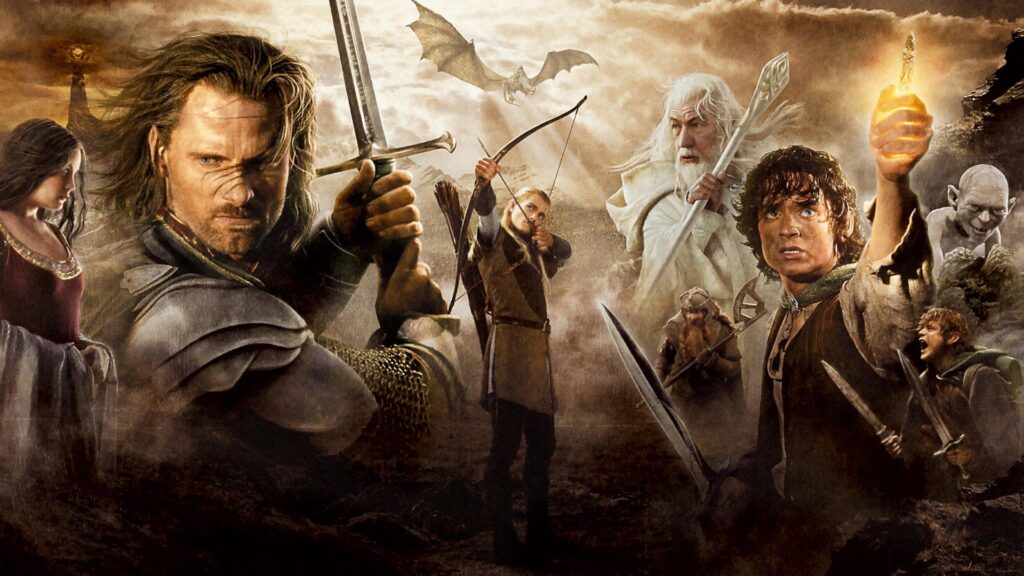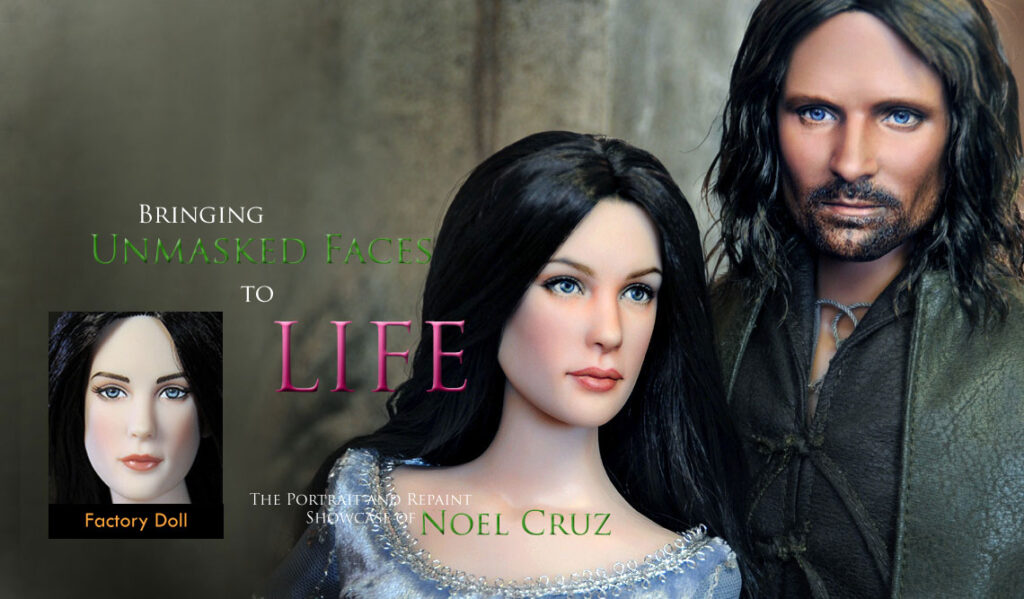
The Lord of the Rings is a film series of three epic fantasy adventure films directed by Peter Jackson, based on the novel written by J. R. R. Tolkien. The films are subtitled The Fellowship of the Ring (2001), The Two Towers (2002) and The Return of the King (2003). Produced and distributed by New Line Cinema with the co-production of WingNut Films, it is an international venture between New Zealand and the United States. The films feature an ensemble cast including Elijah Wood, Ian McKellen, Liv Tyler, Viggo Mortensen, Sean Astin, Cate Blanchett, John Rhys-Davies, Christopher Lee, Billy Boyd, Dominic Monaghan, Orlando Bloom, Hugo Weaving, Andy Serkis and Sean Bean.




Set in the fictional world of Middle-earth, the films follow the hobbit Frodo Baggins as he and the Fellowship embark on a quest to destroy the One Ring, to ensure the destruction of its maker, the Dark Lord Sauron. The Fellowship eventually splits up and Frodo continues the quest with his loyal companion Sam and the treacherous Gollum. Meanwhile, Aragorn, heir in exile to the throne of Gondor, along with Legolas, Gimli, Boromir, Merry, Pippin and the wizard Gandalf, unite to rally the Free Peoples of Middle-earth in the War of the Ring in order to aid Frodo by distracting Sauron’s attention.
The three films were shot simultaneously and entirely in Jackson’s native New Zealand from 11 October 1999 until 22 December 2000, with pick-up shots done from 2001 to 2004. It was one of the biggest and most ambitious film projects ever undertaken, with a budget of $281 million. The first film in the series premiered at the Odeon Leicester Square in London on 10 December 2001; the second film premiered at the Ziegfeld Theatre in New York City on 5 December 2002; the third film premiered at the Embassy Theatre in Wellington on 1 December 2003. An extended edition of each film was released on home video a year after its theatrical release.
The Lord of the Rings is widely regarded as one of the greatest and most influential film series ever made. It was a major financial success and is among the highest-grossing film series of all time with $2.981 billion in worldwide receipts. Each film was critically acclaimed and heavily awarded, the series winning 17 out of its 30 Academy Award nominations.

From Wikipedia: The Book. The Lord of the Rings is an epic[1] high-fantasy book by the English author and scholar J. R. R. Tolkien; he called it a “heroic romance“, denying that it was a novel.[T 1] The story began as a sequel to Tolkien’s 1937 children’s book The Hobbit, but eventually developed into a much larger work. Written in stages between 1937 and 1949, The Lord of the Rings is one of the best-selling books ever written, with over 150 million copies sold.[2]
The title names the story’s main antagonist, the Dark Lord Sauron, who had in an earlier age created the One Ring to rule the other Rings of Power as the ultimate weapon in his campaign to conquer and rule all of Middle-earth. From homely beginnings in the Shire, a hobbit land reminiscent of the English countryside, the story ranges across Middle-earth, following the quest mainly through the eyes of the hobbits Frodo, Sam, Merry and Pippin.
Although generally known to readers as a trilogy, the work was initially intended by Tolkien to be one volume of a two-volume set, the other to be The Silmarillion, but this idea was dismissed by his publisher.[3][T 2] For economic reasons, The Lord of the Rings was published in three volumes over the course of a year from 29 July 1954 to 20 October 1955.[3][4] The three volumes were titled The Fellowship of the Ring, The Two Towers and The Return of the King. Structurally, the work is divided internally into six books, two per volume, with several appendices of background material at the end. Some editions print the entire work into a single volume, following the author’s original intent. The Lord of the Rings has since been reprinted many times and translated into at least 56 languages.
Tolkien’s work, after an initially mixed reception by the literary establishment, has been the subject of extensive analysis of its themes and origins. Although a major work in itself, the story was only the last movement of a much older set of narratives Tolkien had worked on since 1917 encompassing The Silmarillion,[5] in a process he described as mythopoeia.[a] Influences on this earlier work, and on the story of The Lord of the Rings, include philology, mythology, religion, earlier fantasy works, and his own experiences in the First World War. The Lord of the Rings in its turn has had a great effect on modern fantasy.
The enduring popularity of The Lord of the Rings has led to numerous references in popular culture, the founding of many societies by fans of Tolkien’s works,[7] and the publication of many books about Tolkien and his works. It has inspired numerous derivative works including artwork, music, films and television, video games, board games, and subsequent literature. Award-winning adaptations of The Lord of the Rings have been made for radio, theatre, and film. It has been named Britain’s best novel of all time in the BBC’s The Big Read.

